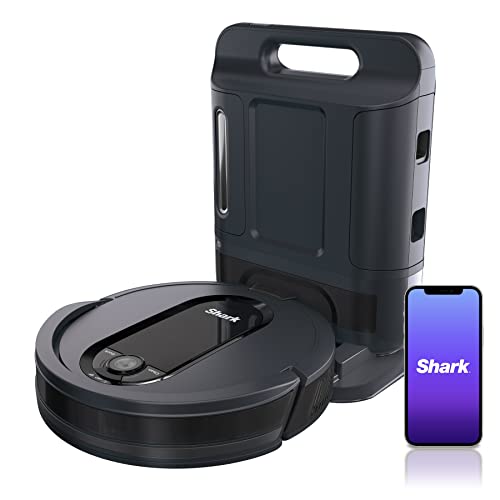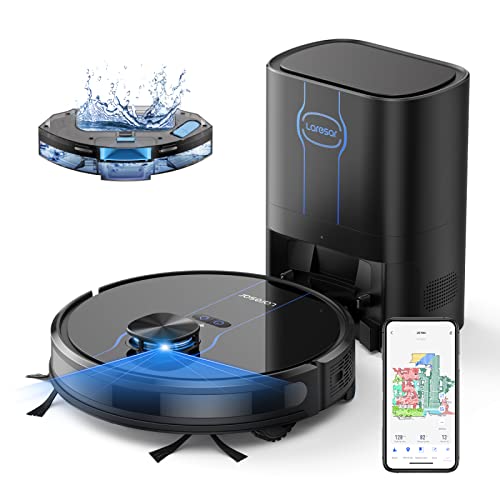The 10 Scariest Things About Bagless Floor Cleaners

Mary
2024-09-03 01:21
14
0
본문
 Bagless Floor Cleaners
Bagless Floor Cleaners Vacuum cleaners with bags offer a quick, dust-free, and easy way to get rid of dirt and other debris they gather up. Bags must be replaced regularly in vacuum cleaners that use bags, since full bags can impact suction power. Vacuums that don't require bags are less messy but they also can get clogged and may require specialized filters.
Vacuum cleaners with bags offer a quick, dust-free, and easy way to get rid of dirt and other debris they gather up. Bags must be replaced regularly in vacuum cleaners that use bags, since full bags can impact suction power. Vacuums that don't require bags are less messy but they also can get clogged and may require specialized filters.Hardwood Floors
Hardwood floors can be stunning and timeless, but they require a bit of extra attention to maintain their appearance. A regular routine of sweeping or dust mopping along with occasional use of bags-free vacuums for hardwood floors will keep clean of dirt and debris.
The best vacuum for hardwood flooring depends on your requirements. You'll need to choose a model that has a soft and smooth brush or floorhead that is a roller. These models won't scratch your hardwood. Also, you'll want a vacuum with plenty of suction power as well as an enormous dust bin that automatically shuts off when it's full. Also, you'll want a vacuum that is easy to maneuver around furniture and into corners.
A bagless robot vacuums model such as this one from Shark is a great choice for hardwood floors. The adjustable cleaner head allows you to switch between bare floor and carpet mode, so it will work fine on both hardwood floors as well as flat-weave or low-pile rug. This model also has a large dustbin that doesn't require frequent emptying it will save time and effort in the long run.
If you're a pet owner or other allergens in your home, then you will want to find a vacuum that has a special attachment for picking up pet hair. This attachment can be easily connected to the vacuum and will eliminate the hair particles without additional effort. This attachment is great for removing sticky spills such as syrup or jelly.
When cleaning wood floors, be sure to not use excessive water. Wood can absorb moisture and expand. This could cause it to crack or warp with time. After every cleaning session, you should also shake your mop or rag out thoroughly. To prevent water stains clean off any spills and stains when they happen. Maintaining a temperature that is comfortable can help reduce fluctuations in humidity and contraction and expansion, which could cause wood to swell and crack.
Carpets
Carpets can warm cold rooms and visually tie them together. However they can be difficult to keep free of dirt and debris. Vacuuming regularly is important however, it's also important to sweep with a hard broom to remove other dirt and dust particles.
To avoid damage caused by the beater brushes of the floor cleaner that is bagless intelligent vacuums, consider using one with bristles that are flexible or soft. You can also use carpets made of natural fibers that don't require harsh chemicals to clean, such as silk or wool.
The majority of carpets used today are synthetic blends that have been designed to withstand the rigors of heavy traffic and soil. Nylon is popular for its durability and cost-effectiveness while polyester is a less expensive alternative that offers the same appearance and springiness to wool. It is also more resistant to mildew and soil. Try a synthetic blend, also known as triexta if you want to save money even more.
Another method to keep carpets and rugs spotless without vacuuming is by rolling out and cutting a few inches of packaging tape and then pressing it against the surface of carpet or rug to collect loose hairs, fur and dirt. Discard the tape when its stickiness goes and replace it with a fresh strip when needed. Alternately, lint rollers are equally effective.
If you want to vacuum carpets, select one that has a floorhead for carpets. One of the best examples is the Miele Classic C1. This budget-friendly upright offers an updated floorhead that comes with plastic combs that trap hair and keep it from getting caught in the brushroll or getting stuck under the power head and three settings that can be manually adjusted to provide a quicker, more efficient method of cleaning low- and high-pile carpets and rugs.
You might want to consider the SEBO Airbelt D4 for a more expensive alternative. This canister in the middle of the range isn't as maneuverable as BISSELL's Pet Hair Eraser turbo rewind, however it has more attachments to tackle carpets. It also has an ET-1 powerhead with three levels of surface adjustment. It also offers better suction and collection than the cheaper Dyson Ball Animal 3 The plastic chassis is weak and its components require regular cleaning.
Rugs
Rugs are made of woven fabric that cover the floor and provide warmth and comfort, as well as a beautiful design element. They're often located in areas with lots of traffic, like the entryway or near the front door to protect floors from scratches, spills and claws of pets. They can also be used to add sound insulation in large rooms or open concept living spaces.
Rugs are available in a variety of sizes in all colors, shapes, and colors and can be made of various materials, including silk and wool. They can be distinctive design pieces that show off artistic craftsmanship or simply practical objects that add warmth and beauty to your home.
Rugs can increase security by cushioning our steps. This is particularly beneficial for homes with seniors or children. It can also reduce the risk of slip-related accidents. If your wood floors are especially slippery after cleaning, placing runners in a high-traffic area can help avoid injuries.
Since rugs are not permanent flooring they are easily moved around the house or brought along if you move. They are also typically cheaper than a brand new floor, making them an attractive option for resale or rental properties. Rugs are also lightweight and easy to move around furniture and appliances.
When vacuuming a rug, make sure to use a nozzle attachment so that you don't harm the fibers. If your rug sheds, then you may have to vacuum it more often or change the direction in which suction is applied. You should also keep the rug out of direct sunlight as it can cause the rug to fade and cause it to age faster.
If you're looking for a cleaner that is bagless vacuum robots make sure you choose one that lets you adjust the suction level to fit the rug's pile. Make sure the machine does not have a beater, which can cause damage to delicate rug. If you own a woven rug made of wool, you should vacuum it at least once or every two weeks in the direction of pile-down to avoid dulling the sheen.
Upholstery
Upholstery is the fabric that covers furniture like chairs, sofas and couches. It can be made of a wide variety of materials, including cotton linen, leather, polyester and wool.
When choosing upholstery, be sure to think about the way in which the fabric will maintain its appearance as time passes. Some fabrics have a backing that adds durability, strength, and resistance. A backing also prevents the fabric from stretching or slouching when permanently upholstered to furniture. Some upholstery fabrics are backed with latex or glue, while others are not -- this depends on the fabric's weave for slipcovers or permanent furniture.
Regularly cleaning your upholstered furniture is essential if you have children, pets or work outside. A vacuum cleaner equipped with an upholstery attachment will quickly remove pet hair and dirt from the cushions and backings of upholstered furnishings.
Spray the upholstery with warm, lukewarm water before cleaning it to loosen dirt and dust. Test any cleaning product on a small portion of the fabric to ensure that it doesn't harm the fabric.
Use a soft brush to gently rub the fabric along its nap (the direction in which the fibers lay). This helps release any dirt that may be stuck in the fibers. Then, gently blot the fabric dry and rinse it with cold water.
After washing, allow the fabric to completely dry before re-installing the cushion covers and/or attaching any trim. If the fabric was trimmed with a cord, make sure not to pull the cord too much. Close the zipper on the fabric before washing it to prevent the stitches from escaping.
The word "upholstery," which means a tradesman holding up his goods, originates from Middle English. The first upholsterers attached animal skins to furniture using nails, but soon began adding padding, stuffing, and fabric covers over the structure of the piece. Over the years, furniture makers have employed a variety of materials to build or re-build their furniture. These include coconut, hay horsehair, animal hair linen, cotton and wool wadding.


댓글목록0
댓글 포인트 안내